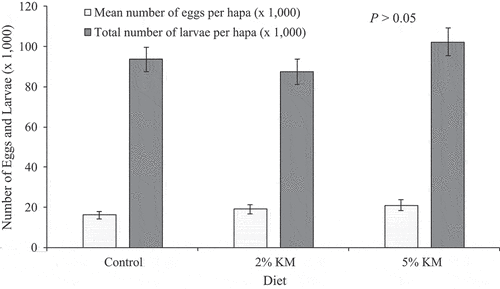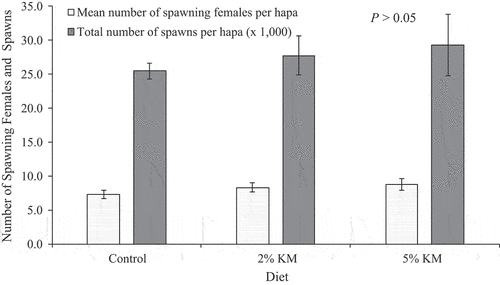Figures & data
Table 1. Ingredient and proximate composition of feeds used in the present study.
Figure 1. Mean number of eggs (x 1,000 ± standard error) per hapa and total number of tilapia larvae (x 1,000, ± se) per hapa (at day 10 post collection) produced over a 12-week period. Fish were fed a commercial diet (control), and diets containing 2 and 5% krill meal (KM). Each hapa was stocked with 50 female tilapia.

Figure 2. Mean number of spawning females (± standard error, se) per hapa and total number of spawns per hapa (x 1,000 ± se) from Nile tilapia broodstock over a 12-week period. Fish were fed a commercial diet (control), and diets containing 2 and 5% krill meal (KM).

Table 2. Proximate composition of eggs from Nile tilapia broodstock fed on a commercial diet and on diets containing 2% and 5% krill meal (KM).
Table 3. Fatty acid profile (%, as-is) of diets and frozen tilapia eggs.
Data availability statement
The data that support the findings of this study are available from the corresponding author upon reasonable request.
